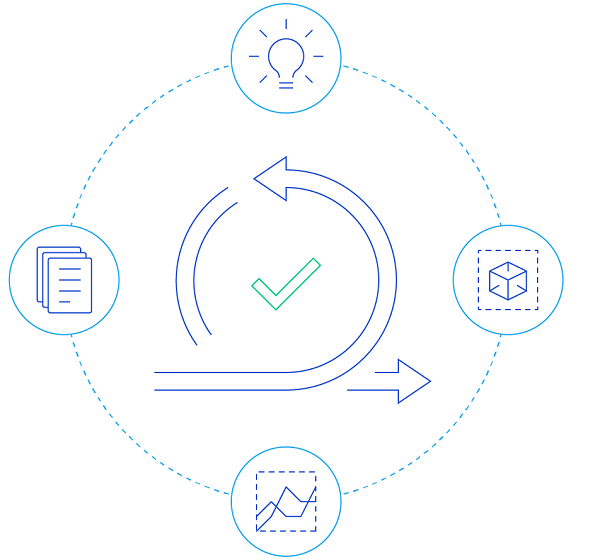The software developers at Siemens Healthcare have come up with something special for customers employing Siemens PACS (Picture Archiving and Communication System) and RIS (Radiology Information System) software: Clinical staff members process their specific tasks via “role-based portals”. These portal applications are tailored to the respective users and workplaces.
Therefore, each application offers precisely those functions the staff member needs for his/her tasks. Siemens developed this portal concept according to the “User Centered Design” method. By combining the practical clinical experience of many customers and users with medical knowledge and modern user ergonomics, developers created an innovative user interface which demonstrably enhances radiology workflows. Three applications of this type are already on the market: The Syngo Portal Radiologist and Syngo Portal Referring Physician support efficient workflow for diagnostic processes relating to all aspects of radiology. Furthermore, Siemens recently introduced the Syngo Portal Transcriptionist, which simplifies the transcription of medical texts for transcriptionists and secretaries.
In order to design software as user-friendly as possible, developers must have specific knowledge of the user, his or her demands, workflows, and the individual process steps. For this reason, Siemens Healthcare introduced the “User Centered Design” method into the IT departments. According to this method, the first step is to analyze the diagnostic process. At this point it is determined which persons are involved in the workflow and which of their roles are important for software development.
They are observed in their individual work environments and interviewed regarding their tasks. This may involve, for example, referring physicians, radiologists, technologists, transcriptionists, or even administrative employees. Therefore, participants include persons who either initiate the process or use the results from the process.
A further element in the method, the “Overview Use Case”, describes the typical role player with respect to age, education, knowledge, characteristics, preferences, and work patterns. The objective is to portray each user group and its working environment as precisely as possible in order to provide the developer with as vivid an impression of the user as possible.
Then the interactions of these persons with the medical-technical system are described and analyzed in the “User Goal Use Case”. This results in the approach that is taken most often and makes the most sense, referred to as “main scenario” or “happy path”, as well as possible alternative scenarios.
The final result of the development process is a software which fulfils its users’ demands and can be operated as simply and quickly as possible. This could mean, for instance, measurably fewer pop-up screens, fewer clicks, shorter mouse paths, or displaying only the essential information onscreen. The 80 percent rule applies here: The information that is required in 80 percent of all cases is displayed on the screen immediately. All other information can be displayed via one more mouse click.

The radiologists at the Jameson Health System in New Castle, Pennsylvania, wouldn’t want to do without their role-based Syngo portals. “Everything is very compact and very logical, and it’s all on the screen at once, including prior reports,” praises Dr. James Cook, Medical Director of the Radiology Department.
The radiologist no longer has to search for the data he needs in different windows. The role-based portals enable the radiologist to work more efficiently. Furthermore, according to Cook, the Syngo Suite solution offers the “best speech recognition system,” thus considerably reducing the time required for reporting.
The Syngo Portal Referring Physician (not available for sale in the U.S.) is the first software product developed by Siemens according to the “User Centered Design” method. Using this portal, the referring physician can, for example, schedule an examination for his patient at a clinic or radiological practice. This way the patient receives an appointment before leaving the referring physician’s practice and can thus avoid time-consuming telephone calls. The referring physician receives the report electronically in the same portal as soon as they have been reported by the radiologist.
The Syngo Portal Radiologist supports radiologists in, for example, checking and approving the indication for the requested procedures, reading images and creating a report and immediately signing reports using the integrated speech recognition function, preparing and conducting clinical conferences. The Syngo Portal Transcriptionist (not available for sale in the U.S.) contains all of the core functions needed by transcription offices for transcription or correction of reports in radiology. The Syngo Portal Executive is currently in development. It will, for instance, help administrators and decision makers in clinics to easily monitor the capacity utilization of equipment in the radiology department as well as plan investment decisions.
The Siemens Healthcare Sector is one of the largest suppliers of healthcare technology worldwide. The company is a medical solution provider with core competences and innovative strengths in diagnostic and therapeutic technologies as well as knowledge processing, including information technology and system integration. With its acquisitions in laboratory diagnostics, Siemens Healthcare is the first integrated healthcare company that combines imaging and lab diagnostics, therapy solutions and medical information technology and also supplements these with consultation and services.
Siemens Healthcare offers solutions for the entire supply chain under one roof – from prevention and early detection to diagnosis and on to treatment and aftercare. In addition, Siemens Healthcare is the world market leader for innovative hearing instruments. The company employs some 49,000 employees worldwide and is present in more than 130 countries. During fiscal 2008 (ending on September 30), Siemens Healthcare achieved a total sales volume of 11.17 billion euros and incoming orders totaling 11.78 billion euros. The Group earnings amounted to 1.23 billion euros. For more information, go to: http://www.siemens.com/healthcare
Reference: How to Incorporate UX and Product Design into Agile
















